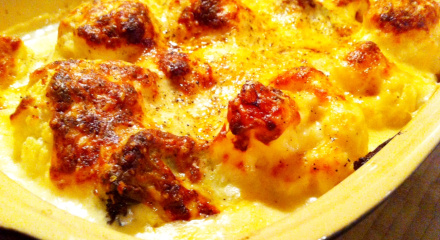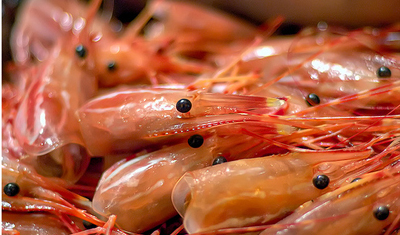 “These grits taste funny. They’re really good, and I am on my third helping, but they taste funny. How do you make them taste like that?”
“These grits taste funny. They’re really good, and I am on my third helping, but they taste funny. How do you make them taste like that?”
The answer at What’s for Supper is goat cheese. Lots and lots of goat cheese.
I can’t remember when I first started adding chèvre to grits, but it has become our standard whenever the taste of the grits needs to be a major part of the dining experience. Which is to point out that grits are almost always a tasty side dish, if made correctly. Instant grits in hot water with margarine is not what I mean by correct.
I use non-instant, non-quick grits, first of all. Those that require 20 minutes or so to cook. Then, I cook them in milk and cream to a fairly dry, not soupy, consistency. This means they will stay where you put them on a plate, and not spread out. A spoon inserted in the center of the pot will remain bolt upright, supported by grits.
After they are cooked and seasoned, we add butter and one or more logs of good chèvre. We let these meld a bit and finish with more heavy cream. You won’t get any thinner eating a batch of these, but you will be very satisfied.


 If you’re by yourself in a city where you’ve never been, where no one knows you, and you’re tired, hungry, and in need of a glass of wine, where do you go? Do you get in your car and drive to the nearest chain? Do you wander downstairs to your hotel’s restaurant – often convenient to its karaoke bar? Do you, heaven forbid, eat fast food? By no means.
If you’re by yourself in a city where you’ve never been, where no one knows you, and you’re tired, hungry, and in need of a glass of wine, where do you go? Do you get in your car and drive to the nearest chain? Do you wander downstairs to your hotel’s restaurant – often convenient to its karaoke bar? Do you, heaven forbid, eat fast food? By no means.  Though not all the world’s fine cuisines began as peasant food, many owe some of their most unique creations to the ingenuity of some poor man or woman trying desperately not to starve. Some very hungry man ate the first raw oyster. Another, lacking an oven or a knife, coated a dead chicken in mud and built a fire on top of it. In Louisiana, they boiled shrimp heads and skins so that they’d have something left after the good part was gone.
Though not all the world’s fine cuisines began as peasant food, many owe some of their most unique creations to the ingenuity of some poor man or woman trying desperately not to starve. Some very hungry man ate the first raw oyster. Another, lacking an oven or a knife, coated a dead chicken in mud and built a fire on top of it. In Louisiana, they boiled shrimp heads and skins so that they’d have something left after the good part was gone.